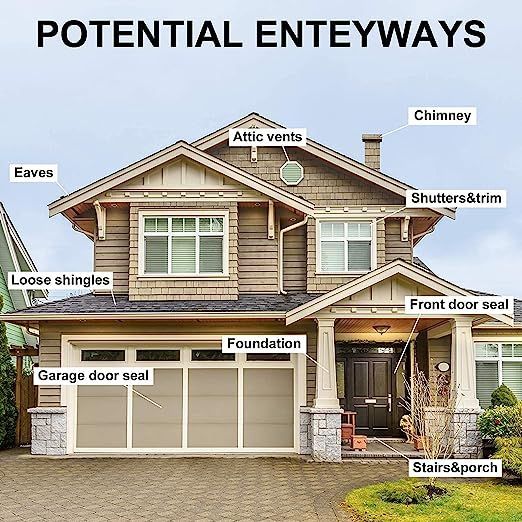
Comprehensive Home Exclusion for Rats
Home exclusion, also known as rodent-proofing, is the most effective long-term solution for preventing rats from entering and infesting your home. This process involves identifying and sealing all potential entry points, maintaining an environment that is unattractive to rats, and ensuring regular maintenance and inspections. Here’s an in-depth guide on how to carry out home exclusion to keep rats out.
Understanding Rat Behavior and Entry Points
Rats are highly adaptable and can squeeze through incredibly small openings. They are excellent climbers and can gnaw through various materials, making it crucial to understand their behavior and potential entry points. Common entry points include gaps in walls, roofs, foundations, vents, and around utility lines.
Identifying Entry Points
- Comprehensive Inspection
- Conduct a thorough inspection of your home, focusing on both the exterior and interior. Look for any holes, cracks, or gaps that rats could exploit.
- Pay special attention to the roofline, soffits, vents, chimneys, and eaves, as rats often access homes from above.
- Check around windows, doors, and the foundation for any gaps or openings. Even small cracks can serve as entry points.
- Interior Inspection
- Inside the home, inspect attics, basements, and crawl spaces. Look for signs of rat activity, such as droppings, gnaw marks, or nests.
- Use a flashlight to thoroughly check dark and hidden areas where rats might travel or nest.
Sealing Entry Points
- Materials for Sealing
- Use durable materials that rats cannot easily chew through, such as steel wool, hardware cloth, caulk, and concrete.
- For small cracks and gaps, steel wool stuffed into the openings followed by caulking can be effective.
- For larger holes, use hardware cloth or metal flashing to cover the area, securing it with screws or staples.
- Specific Areas to Address
- Roof and Eaves: Seal gaps around the roofline and eaves with metal flashing or hardware cloth. Ensure that soffit vents are intact and covered with fine mesh to prevent rat entry.
- Vents and Chimneys: Install vent covers and chimney caps to prevent rats from entering these areas. Ensure that these covers are secure and made of durable material.
- Foundation: Seal any cracks or holes in the foundation with concrete or mortar. Check for gaps where utility lines enter the home and seal them with caulk or expanding foam.
- Doors and Windows: Install door sweeps on exterior doors and ensure that windows close tightly. Use weatherstripping to seal gaps around doors and windows.

